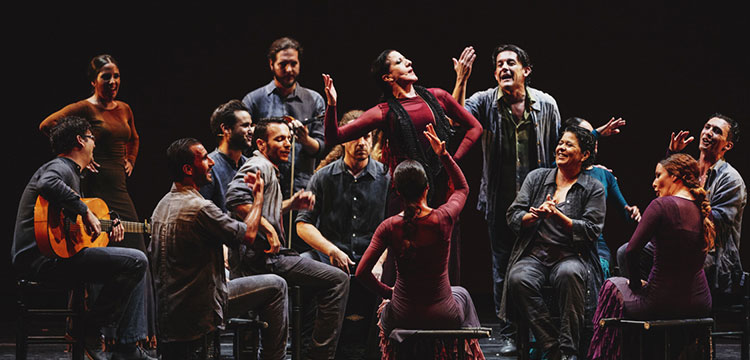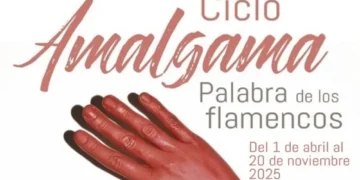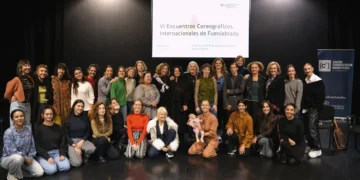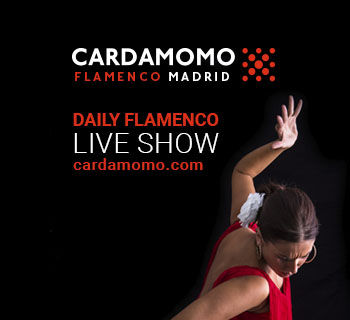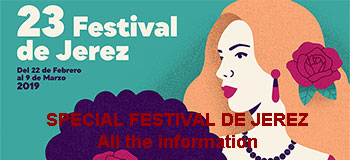Director, choreography and wardrobe design: María Pagés. Script and verses: El Arbi El Harti. Dance: María Pagés, Eva Varela, Julia Gimeno, Marta Gálvez, Virginia Múñoz, José Barrios, Rafael Ramírez, Juan Carlos Avecilla and Manuel del Río. Músic: Ana Ramón (voice), Bernardo Miranda (voice), Rubén Levaniegos (guitar), Isaac Múñoz (guitar), Marina Barba (cello), Daniel Moñiz (violin), Chema Uriarte (percussion). Teatro de la Maestranza. September 21st, 2018. Full house.
Sara Arguijo
With a generous ovation, the kind that makes an entire theater shake, María Pagés left the stage last Friday at the Maestranza after the Seville debut of “Una Oda al Tiempo”, her most recent choreographic work which is actually a collection of poems on the fleeting quality of life and everything the years give and take away.
In her serene self-assured maturity, the dancer goes through four seasons, and constructs an ethical, aesthetic, artistic discourse in which each phase corresponds to an emotion as well as a dance. The toná for the Origen, alegrías for the promise of summer, vidalita for the nostalgia of autumn and mining songs for the darkness of the winter in which we live, just to cite a few examples.
In this way, the work, exquisitely constructed at every level, immerses the spectator in an ethereal capsule in which the pieces fit together like verses and the pendulum that dominates the backdrop (and which is sun and moon depending on the season), is the only thing that marks the transitions and recalls the times.
At the same time, it’s all dance. Malleable dancing from which the dancer again gives a lesson in elegance and good taste. Because what María Pagés does, with a company of eight dancers and seven musicians, is show that there is flamenco for every kind of audience and which will always be liked.
In this sense, this ode to time is, at the same time, a eulogy to beauty. That of a magnificent ballet company with the most pertinent wardrobe, expertly illuminated with the lighting of Dominique You and Pau Fullana (lights that speak!) and which communicates with a universal language that draws from the very history of the art-form (in the music and the texts).
Especially lyrical was the soleá danced by the four women with shawls, with a wonderful María Pagés whose mere presence is imposing. Or the choreography of the canes with the door was opened to the suffering and pain depicting scenes of the “Dos de Mayo” shootings, Guernica and the Pietá, as if the theater were a canvass and the dancers the people involved. Although in this descriptive dance there were also seagulls and trees whose roots struggled to seek new territory.
On her own she led us down the path with her slow dancing and infinite arms, moving the bata de cola in the siguiriyas she interpreted with castanets afterwards, and in the vidalita, where she showed, as Borges once said, that only after a time does a person learn the subtle difference between sustaining a hand movement and imprisoning a soul. Certainly an important work for lovers of dance.



